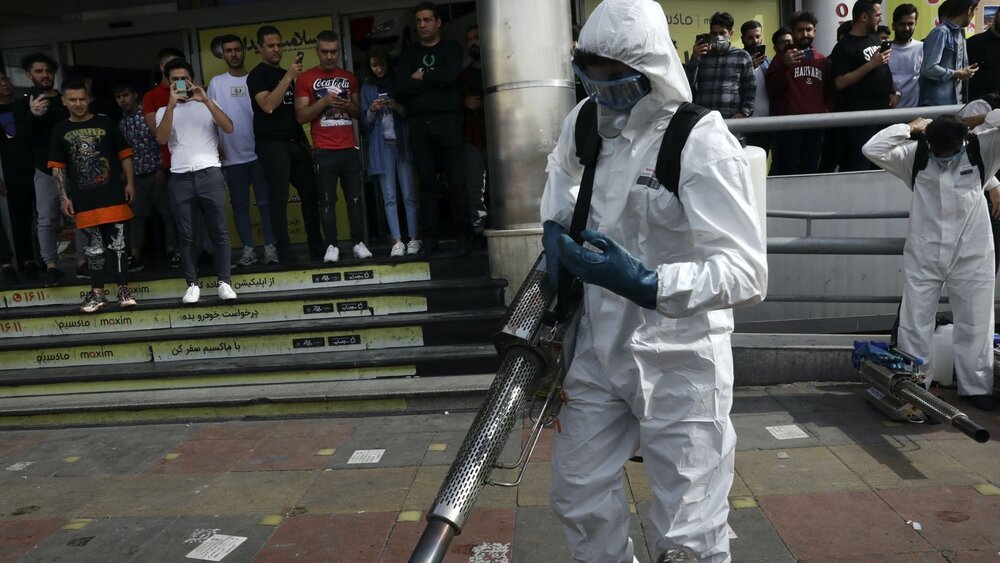New year travels plunge amid virus outbreak

For many Iranians, the new year’s eve conjures up memories of holidays and traveling along dreamy beaches, silky warm seas, lush sceneries, and endless sunshine.
Unlike any previous year, this year its travel market, both domestic and inbound, is taking a big hit over the peak season as coronavirus fears prompt people to stay home.
Moreover, local and government authorities have issued severe warnings recently, urging to limit travel between major cities in order to contain the virus. They also warned that may use “force” to limit travel throughout the country if needed.
Air, rail and road travel markets have been grounded drastically to a screeching halt in the country, at a time when its already battered tourism industry had fallen into tatters largely due to tensions with the United States, its economic sanctions, and propaganda war spearheaded by some Western media.
The last month of the year, which ends on March 19 this year, is the most bustling and booming period for tourism sector because it culminates in Noruz, the Iranian new year. It corresponds with national holidays when the entire country takes on a festive mood, marked by an elaborate set of rituals, family gatherings and travel.
Prior to the virus fears, the sector, however, had managed to stay afloat, if not thrived, before the spread of the disease in this land with endless wonders.
In the face of outbreak, Iranian tourism minister Ali-Asghar Mounesan asked people to postpone or reschedule tours so as to help the tourism industry deal with the coronavirus outbreak.
“My suggestion to my dear people is that they do not cancel their hotel reservations and domestic tours as far as possible in order to help the tourism industry and prevent it from bankruptcy by making their reservations in time after virus is controlled.”
He went on to say that Noruz celebrations will be cancelled in all 31 provinces across the country, including all museums (and historical sites that are affiliated with the Ministry of Cultural Heritage, Tourism and Handicrafts) should be closed during the holidays.
Deputy tourism minister Vali Teymouri said earlier this month that more than 700 billion rials (over $16 million) have so far been paid back to people who have cancelled their tours or hotel reservations over the coronavirus fears.
Teymouri also thanked “dear compatriots” and tourists for their cooperation with the “family of the tourism industry” in the country; those considering the special economic conditions of the tourism operators and hoteliers at this recessionary time, postponing the travel plans for a later time.
The coronavirus outbreak has pushed the country’s death toll past 600 till Saturday and triggering new limits on people’s movements. Some 13,000 people have so far confirmed infected by the COVID-19 – including several senior government officials testing positive.
Iran has also suspended schools and banned spectators from stadiums. The streets and markets are still crowded in the capital, Tehran, which has been the hardest hit by the virus.
The coronavirus epidemic is putting up to 50 million jobs in the global travel and tourism sector at risk, with travel likely to slump by a quarter this year. Asia is expected to be the most affected continent, according to the World Travel and Tourism Council.
Many travel officials, tour operators believe that Iran will make a quick rebound as soon as the virus is defeated. The impact would depend on how long the epidemic lasts by recent restrictive measures.
Because Iran has never ceased to attract tourists from around the world as it’s home to hospitable people, and hundreds of historical sites such as bazaars, museums, mosques, bridges, bathhouses, madrasas, mausoleums, churches, towers, and mansions, of which 24 being World Heritage sites.
Last year, Iranians made 74 million overnight stays in their domestic trips during the Noruz holidays, which showed a 20 percent increase year on year. Some 132 million visits to tourist attractions were registered during the mentioned period, which shows a 34 percent growth year on year, according to data compiled by the Ministry of Cultural Heritage, Tourism and Handicrafts.
The Islamic Republic was ranked the third fastest-growing tourism destination in the globe in 2019, with 27.9 percent growth year on year, according to the latest statistics released by the United Nations World Tourism Organization (UNWTO).
Some eight million foreign nationals visited Iran since the beginning of the current Iranian calendar year (March 21, 2019) despite U.S. sanctions and a sharp decline in flights by some foreign airlines.
The country expects to reap a bonanza from its numerous tourist spots. Under the 2025 Tourism Vision Plan, it aims to increase the number of tourist arrivals from 4.8 million in 2014 to 20 million in 2025.
AFM/MG
